April 3, 2025 | 17:37 GMT +7
April 3, 2025 | 17:37 GMT +7
Hotline: 0913.378.918
April 3, 2025 | 17:37 GMT +7
Hotline: 0913.378.918
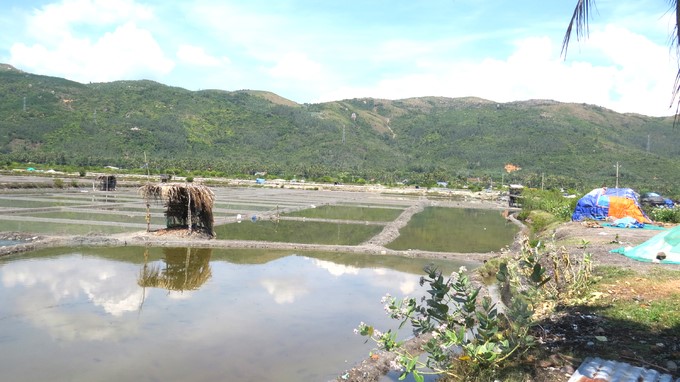
Due to prolonged rain, the Le Uyen salt production area was still filled with fresh water, even though the crop is coming. Photo: Manh Hoai Nam.
Song Cau town (Phu Yen) has three salt production regions, including Le Uyen, Trung Trinh (Xuan Phuong commune), and Tuyet Diem (Xuan Binh commune). The salt production handicraft depends on the weather, waiting for the sun and being afraid of the rain. However, according to salt farmers, this year’s weather is quite extraordinary because it was still raining and cold throughout the first half of March and the salt fields lacked seawater. Not one person, but the whole salt-producing village, complained that God did not give salt this year.
According to National Highway 1A, from the center of Song Cau town, go north to the top of Le Uyen bridge and look to the left; there is a Tuyet Diem salt sign (the Tuyet Diem salt cooperative has three salt production areas, including Le Uyen, Trung Trinh, and Tuyet Diem), with the fields covered with seaweed and algae right below.
Mr. Bui Van Dung, a Le Quyen’s salt worker, visited the field in front of his house, looked at the weeds, and lamented: "A few years ago, this month was the period of taking seawater into the fields for salt crystallization, but this year the fields were still filled with the weeds. The reason is that this year, from January to February of the lunar calendar, the salt fields contain rainwater, so seaweed and algae grow thick.
"When the field is out of fresh water, salt farmers "slope" the bank and lagoons to store brine. For the bank's construction, when the flood season passed, causing the bank to sag, the farmers had to set up the field’s bank in the new salt crop. They have to try to slope a bank and then make soil on both sides to fill it up, then sit on the bank and use a flat wooden tree to press the two sides together to chop it. Pressing again and again for three consecutive days until the edge of the field is as hard as pouring cement is called "sloping" the bank." added Mr. Bui Van Dung.
To consolidate the salt fields, every year in the new salt crop, the salt workers hoe the field and then use a shovel (a flat log rolled in) to forcefully press the compaction layer to loosen the soil. To flatten the field, salt workers have to lift the pile thousands of times when the lagoon has to go backwards to fill the footprints.
When concentrating, it is mandatory to wear "top slippers", which mean using a large sponge with the handle threaded by the feet’s close-fitting fabric to increase the contact area with the field surface and thereby avoid sinking when wading in the field. Every salt farmer must wear "top slippers"; if not, their small feet will sink deeply, and they have to do it again and again. If wearing "top slippers", the field does not subside, so the lagoon just slips through.
"I work as a hired salt compacting worker; these days I have prepared "slippers," wading in the field, but no one has hired me because of the heavy rain and fresh water flooding the bank," shared Mrs. Nguyen Thi Hien, a Trung Trinh's salt maker.
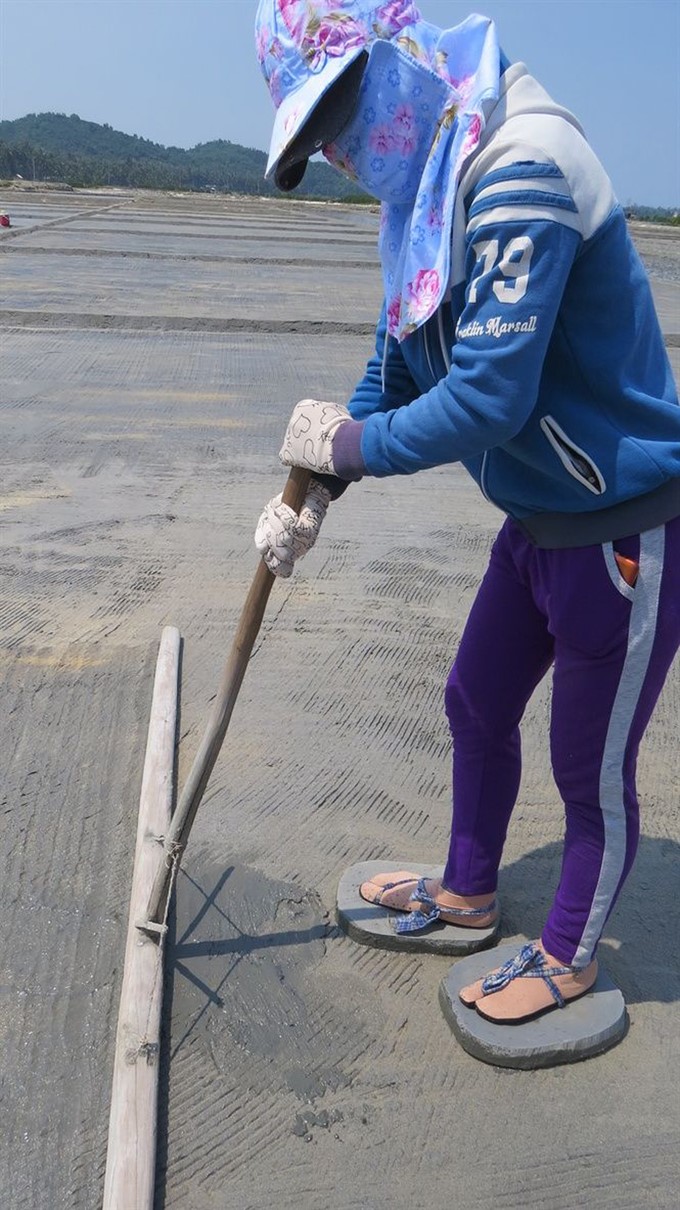
"Top slippers" use s large sponge with the handle threaded by the feet's close-fitting fabric when compacting the salt fields. Photo: Manh Hoai Nam.
Mrs. Nguyen Thi Hien stated that in the salt field compaction, the field sank to the ankles in the first lagoon and no footprints were left in the 10th. That careful implementation helps the salt grains remain firm and pure white, not muddy.
"In the salt processing stages, the skin compaction is the most elaborate because the field surface must be as flat as a sheet of paper so that when the field "wears salt" (precipitates), the salt spreads evenly across the field. If the lagoon is not flat, this place "wears salt" and there is still water, it will destroy the whole field", said Mrs. Nguyen Thi Hien
Le Uyen and Trung Trinh salt areas’ water is from Xuan Dai Bay, while Tuyet Diem area gets water from Cu Mong lagoon. However, currently in this area, many people raise lobsters, snails, etc., and domestic water pours into bays and lagoons, so that the water is reduced in salinity, leading to a decrease in salt output.
According to Mr. Phan Van Tung, a professional salt maker in Tuyet Diem, the salt was previously dry in three days, but in recent years, due to light seawater (salinity reduction), it has taken only five days to dry. A bunch of salt (nearly 1 acre wide) previously contained five burdens; nowadays only three burdens remain (equivalent to three salt packages).
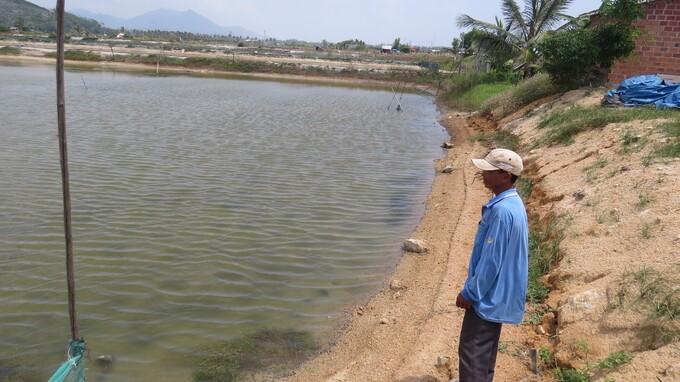
Recently, because of the highly increasing price of salt, salt farmers are eager to product, but the fields have not yet had seawater. Photo: Manh Hoai Nam.
“This profession is suitable for the sun, not the rain, but it must burn like fire so that the seawater quickly turns into salt. According to many salt farmers’ experiences, with the same strong wind and sun, salt production has been low recently, "said Mr. Phan Van Tung.
Ms. Bui Thi Hong, a salt maker in Tuyet Diem village, lamented: "In recent years, due to low salinity, the amount of salt crystallized in the field is only half as much as before. This year’s weather is extraordinary, still cold and raining throughout the first half of March; salt fields lack seawater. Not one person, but the whole salt-producing village, complained that God did not give salt this year."
According to the Phu Yen province’s Sub-Department for Rural Development, the salt production area of Song Cau town has 183.8 hectares, of which 13.5 hectares are for clean salt production using the tarpaulin method. The total number of households involved in salt production is 570. The average annual salt production is 150 tons.
Mr. Nguyen Duc Thang, Director of the Phu Yen Rural Development Sub-Department, said that the locality is asking the central government’s support for funding, upgrading infrastructure, and solidifying the irrigation system to serve the fresh water withdrawal and seawater conduction.
According to the survey, currently, the irrigation system, traffic, and dike works are degraded, causing the salt fields to flood in the rainy season. The internal transportation system is narrow and all dirt roads, making it difficult to transport salt. The Department of Agriculture and Rural Development is developing a project to focus on planning the area of large salt production fields and investing in improving infrastructure to restore production in order to increase the value of salt production and processing.
Translated by Huyen Vu Thu
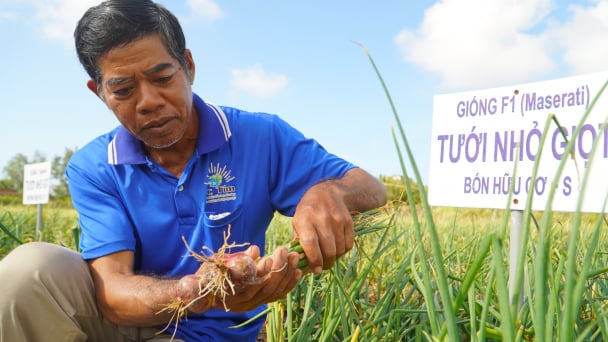
(VAN) In the face of the reduction of underground water source, farmers from Vinh Chau desire to transform to the drip irrigation methods to save water, reduce costs and enhance crop output.
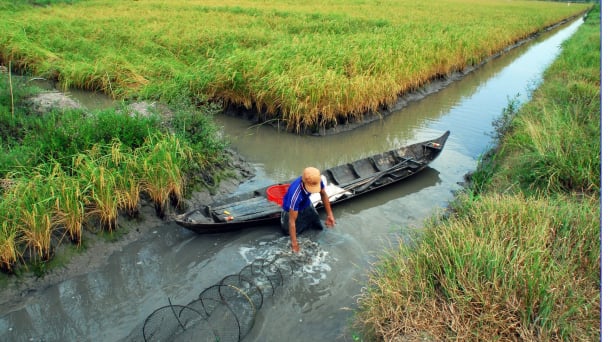
(VAN) Green development is a prerequisite for the Vietnamese shrimp industry to maintain its position in the global market by applying advanced technologies and effectively controlling diseases.
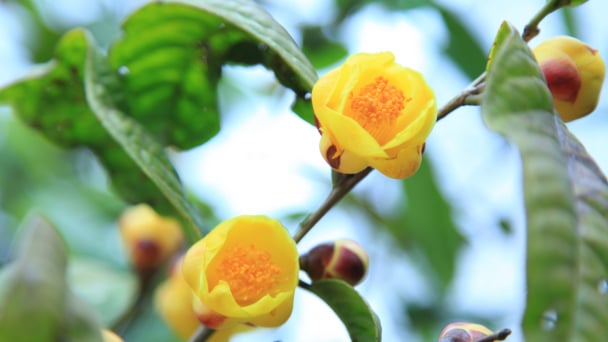
(VAN) Quang Ninh province's Ba Che yellow camellia tea is a highly regarded specialty that has been officially designated as a national 5-star OCOP (One Commune One Product) product.
/2025/03/27/5827-2-125018_139.jpg)
(VAN) Thanh Thanh Cong-Bien Hoa Joint Stock Company (TTC AgriS) signed a memorandum of understanding (MOU) with Nanyang Technological University (NTU) under the witness of the two Prime Ministers of Vietnam and Singapore.
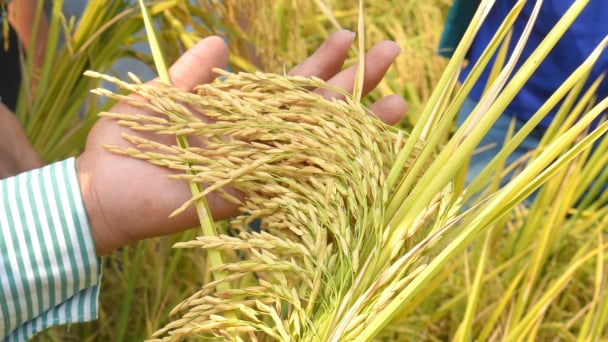
(VAN) In the first trial production season, the pure rice variety Ngoc Nuong 9 demonstrated its advantages of easy cultivation, high yield, and a profit of over 45 million VND/ha.
/2025/03/26/5733-6-145223_956.jpg)
(VAN) Japan Vietnam Fertilizer Company is one of the pioneering fertilizer companies in the use and application of agricultural drones in sustainable agricultural cultivation.

(VAN) Adoption of artificial intelligence (AI) has fostered the hydrometeorology sector in increasing significantly the accuracy in forecasting and early warning of natural disaster risks.